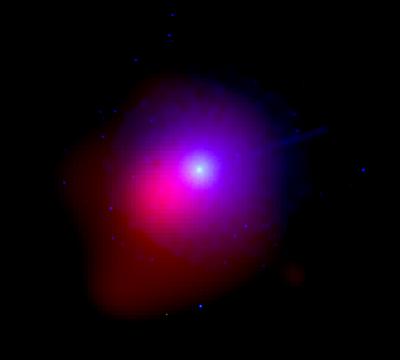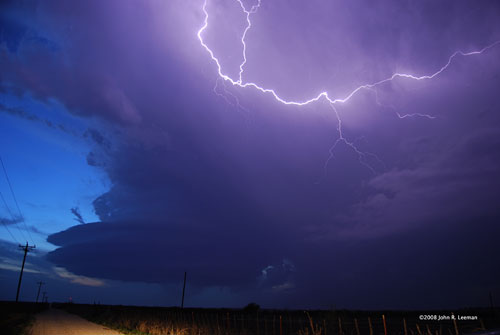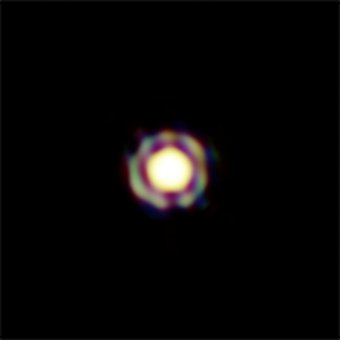
© NASA/Swift/Univ. of Leicester/Bodewits et al.This image of Comet Lulin taken Jan. 28 merges data acquired by Swift's Ultraviolet/Optical Telescope (blue and green) and X-Ray Telescope (red). At the time of the observation, the comet was 99.5 million miles from Earth and 115.3 million miles from the sun.
While waiting for high-energy outbursts and cosmic explosions, NASA's Swift Gamma-ray Explorer satellite is monitoring Comet Lulin as it closes on Earth. For the first time, astronomers are seeing simultaneous ultraviolet and X-ray images of a comet.
"We won't be able to send a space probe to Comet Lulin, but Swift is giving us some of the information we would get from just such a mission," said Jenny Carter, at the University of Leicester, U.K., who is leading the study.
"The comet is releasing a great amount of gas, which makes it an ideal target for X-ray observations," said Andrew Read, also at Leicester.
A comet is a clump of frozen gases mixed with dust. These "dirty snowballs" cast off gas and dust whenever they venture near the sun. Comet Lulin, which is formally known as C/2007 N3, was discovered last year by astronomers at Taiwan's Lulin Observatory. The comet is now faintly visible from a dark site. Lulin will pass closest to Earth -- 38 million miles, or about 160 times farther than the moon -- late on the evening of Feb. 23 for North America.



Comment: This to us looks like a typical side scanning sonar track produced from scientific cruises or underwater autonomous vehicles to scan interesting sections of the ocean (most of the ocean topography is gathered from gravity data and sonar readings). Perhaps Google didn't get a properly interpolated image of this section of the ocean.